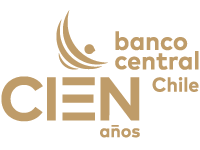Monetary Policy Meeting 13 June 2018
Press
Wednesday, June 13, 2018
At its monetary policy meeting, the Board of the Central Bank of Chile decided to hold the monetary policy interest rate at 2.5%, so the intensity of the monetary impulse is unchanged. The decision was adopted by the unanimous vote of all the Board members.
The outlook for global growth shows no big changes and points to an expansion that on average will outperform that of the last three years. In the United States, data on prices, employment and wages suggest inflationary pressures have increased, as opposed to developments in Europe, where inflationary pressures appear more bounded. This has caused market expectations to anticipate a process of faster normalization of the US federal funds rate, and has sustained the strengthening of the dollar in multilateral terms. In its June meeting the Federal Reserve increased the policy rate for a second time this year.
In this context, lower risk appetite has been observed, causing a depreciation of emerging economies’ currencies, and in several of them spreads and long-term interest rates have increased. In any case, the growth forecasts have not changed significantly and most short-term indicators are generally stable. Exceptions are some countries in Latin America where adjustments to financial conditions have combined with idiosyncratic factors, giving way to downward revisions to their growth projections. Such are the cases of Argentina and Brazil.
Regarding commodities, in recent days the copper price has risen significantly to near US$3.3 per pound. According to market reports, this rise would be transitory. The oil price is still above the estimates in the March Monetary Policy Report, so projections have been adjusted upwards.
In the local financial system, the stability of long-term interest rates stands out, contrasting with many emerging economies. Interest rates on indexed securities have fallen, in line with higher inflation expectations. Domestic credit continues to be characterized by low interest rates and moderate growth in loans, beyond a rebound in commercial credit. The exchange rate has depreciated in line with the evolution of parities at the global level. Multilateral indicators show a milder depreciation of the Chilean peso.
Activity and demand prints published since the last Meeting confirm a sustained recovery of the economy. The higher figures for the first four months of the year reflected the low base of comparison twelve months ago, the improved performance of several investment-related activities and some durables, as well as supply factors that are considered transitory. The labor market continues to show a lagged behavior regarding activity, in particular because of weak creation of private salaried employment. In contrast, imports—of both consumer and capital goods—remain dynamic, business confidence (IMCE) and consumer confidence (IPEC) are at their best in several quarters, and financial conditions remain loose. In this context, compared with the last Meeting, the Economic Expectations Survey (EES) rose the expected growth for this year and next, in both cases to 3.8% (3.6% and 3.7% according to the April EES, respectively).
The annual inflation of the CPI remained around 2% and the CPIEFE at 1.6%. The inflationary dynamic is still determined by the evolution of the exchange rate, in an economy where capacity gaps remain and by indexation to lower inflation rates. With this, the annual variation of the CPIEFE for goods persists in slightly negative territory and for services remains close to 3%. Inflation expectations have increased at shorter terms, approaching 3% one year head, coinciding with the higher price of oil and the peso depreciation of recent months. Two years ahead they are still around 3%.
The Board’s decision considered that both the latest data and the analysis in June’s Monetary Policy Report point to decreased risks for inflation convergence. On the one hand, the recovery of the economy continues to consolidate and, on the other, perspectives for short term inflation have been revised upwards mainly due to the peso value of oil. Notwithstanding, CPIEFE inflation will have a similar path to the one forecasted in March in a line with an economy that still has capacity gaps. The Board foresees that the monetary stimulus will be kept around its current levels and will start to decrease as macroeconomic conditions keep driving inflation convergence towards 3%. Thus, the Board reaffirms its commitment to conduct monetary policy with flexibility, so that projected inflation stands at 3% over the two-year policy horizon.
The minutes of this Monetary Policy Meeting will be published at 8:30 hours of Thursday the 28 June 2018. The next Monetary Policy Meeting will take place on Monday 23-Tuesday 24 July 2018, and the statement thereof will be published at
18:00 hours of Tuesday 24.
_________________
* The Spanish original prevails.
